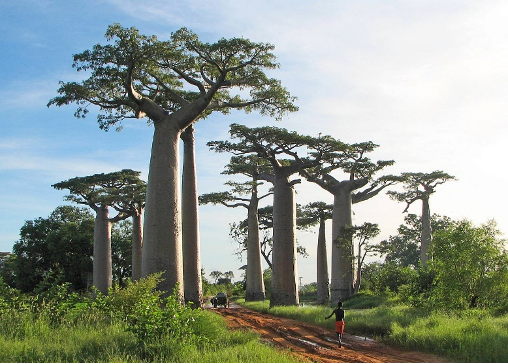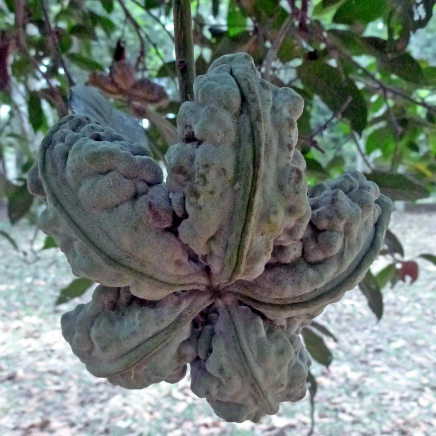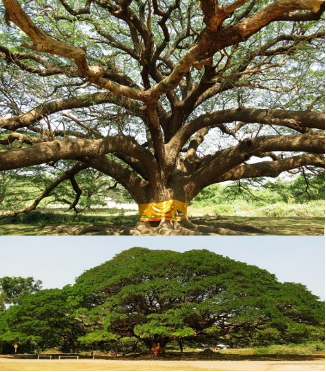Please note that this article contains mention of FARM-TRACE, the previous name for Taking Root’s technology platform. This name was dropped in April 2022 when Taking Root rebranded, which included integrating the technology platform into its identity. FARM-TRACE is now referred to as Taking Root’s technology platform.
In my last blog post, (which you can check out here – Forest carbon, measuring what we cannot see) I discussed the links between global deforestation issues, Taking Root’s FARM-TRACE application, and carbon sequestration. During that research, I stumbled across some pretty unbelievable facts about tropical trees that I thought I should share. For thousands of years, forests have provided all kinds of invaluable services such as carbon sequestration, food, lumber, fuel, recreation, medicine, cultural history, watershed regulation, and biodiversity. Incredibly, no other type of forest in the world accomplishes this quite like the tropical forests.
Please enjoy this list of unique tropical trees!

Soapberry (Sapindus Saponaria) – South and Central America. Figure 1 Photograph by Jim Conrad. Public domain
1. Soapberry (Sapindus Saponaria) – South and Central America
The Soapberry tree grows fruit containing emulsifying saponins which is used in soap. It is said that 6-7 fruits can wash up to 5 loads of laundry [4]! Definitely not a fruit you want to add to your pie. The fruit is not known to be lethal to humans, but they are harmful to aquatic species. Therefore, hunters would traditionally place the fruits in streams to kill the fish [5].
2. African Tulip Tree (Spathodea campanulate) – Africa
The unopened flower buds on the African Tulip Tree tend to become engorged with a red nectar. The local children have discovered that they are excellent as water pistols. A good squeeze could send a nectar squirt as far as 10 feet [6]!
3. Java plum (Eugenia jambolana) – East Asia
This ancient tree has been cultivated for over 2,500 years in India, often planted near temples for its cultural and religious significance. It is believed to be sacred to Krishna, the Hindu deity [7]. In some texts, his skin is illustrated as having the same colour (purple) as the Java plum [8].
4. Sour Sop (Annona muricata) – South and Central America
The Sour Sop fruit resembles a spikey avocado, has a pineapple-like odour, and a unique acidic flavouring [9]. This tree bears a weighty fruit that can grow up to 15 pounds! Different parts of Sour Sop have been used by traditional healers to treat diseases such as cancer, inflammation, heart conditions, and liver disease [10]. Despite its healing properties I would beware the falling fruits!

Sour Sop (Annona muricata) – South and Central America. Figure 2 “File:Annona muricata L. (12519291885).jpg” by Alex Popovkin, Bahia, Brazil is licensed under CC BY 2.0

Giant Baobab – Figure 3 By Bernard Gagnon – Own work, CC BY-SA 3.0, link to source
5. Giant Baobab (Andansonia grandidieri) – Africa
The Giant Baobab is also known as the ‘Tree of Life’. Not only for its importance to local birds, mammals, reptiles, and insects, but also their ability to live forever [11]. Radiocarbon dating methods suggest that some of the largest baobabs could be more than 2,000 years old [11]. They are also capable of nutrient cycling, preventing erosion, and storing an insane amount of water (up to 32,000 gallons!) [12]
6. Cola nut (Cola acuminata) – Africa
One of the primary ingredients in Coca-Cola used to be the Cola nut, after which it was named [13]. The recipe is now said to include an artificial alternative [14]. Due to the Cola nut’s rich concentration of caffeine, Native Peoples will chew the seeds during long hunting trips as a stimulant to alleviate fatigue, hunger and thirst [15]. This renders it particularly helpful to Muslims in the drier regions of West Africa during Ramadan [16].

Cola Nut (Cola acuminata) – Africa – Figure 5 Photograph by Scamperdale CC BY-SA 3.0
7. Manchineel (Hippomane mancinella) – South and Central America
The Manchineel, also known as Poison Guava, is the most dangerous tree in the world according to the Guinness Book of World Records [17]. Interaction or ingestion of any part of this tree could be lethal [18]. Therefore, DO NOT eat this deceiving fruit! Especially if served by an evil witch. The toxin contained within the fruit, bark, and leaves is water-soluble. Therefore, the last place you would want to seek shelter from a rainstorm would be underneath a Manchineel.

Rain Tree (Samanea saman) [19] – Figure 6 By InMemoriamLuangPu – Own work, CC BY-SA 3.0, Link to source
8. Rain Tree (Samanea saman) [19] – South and Central America
The Rain Tree is a beautiful tree with a uniquely short stem and a wide, dome-shaped crown, reaching up to 60 meters in diameter! In contempt of its dense crown, this is another tree where you would not seek shelter from rain. The light-sensitive leaflets close on cloudy days, allowing rain to pass straight through.
9. Breadnut (Brosimum alicastrum) – South and Central America
This tree has been cultivated for centuries by Indigenous Peoples (in South and Central America), valued as a reliable source of nutrition during drought periods. The Breadnut is essentially a vitamin filled with fiber, calcium, potassium, folate, iron, zinc, protein, and vitamins A, B, C, and E [20]. When dried, the seeds can be stored for up to 5 years without spoiling [20].
10. Cacao (Theobroma cacao) – Central America
Cacao trees take up to 5 years to produce the large orange seed pods along its stem and branches. To produce chocolate from these pods, they must be harvested by hand, opened with a machete, and placed in large fermentation trays that are covered in banana leaves for two to seven days [21]. Each of the pods containing 20-50 beans, contributes to only 1/8th of a single chocolate bar [22]!
Author: Megan Burkholder, Junior Forest Project Developer[:]